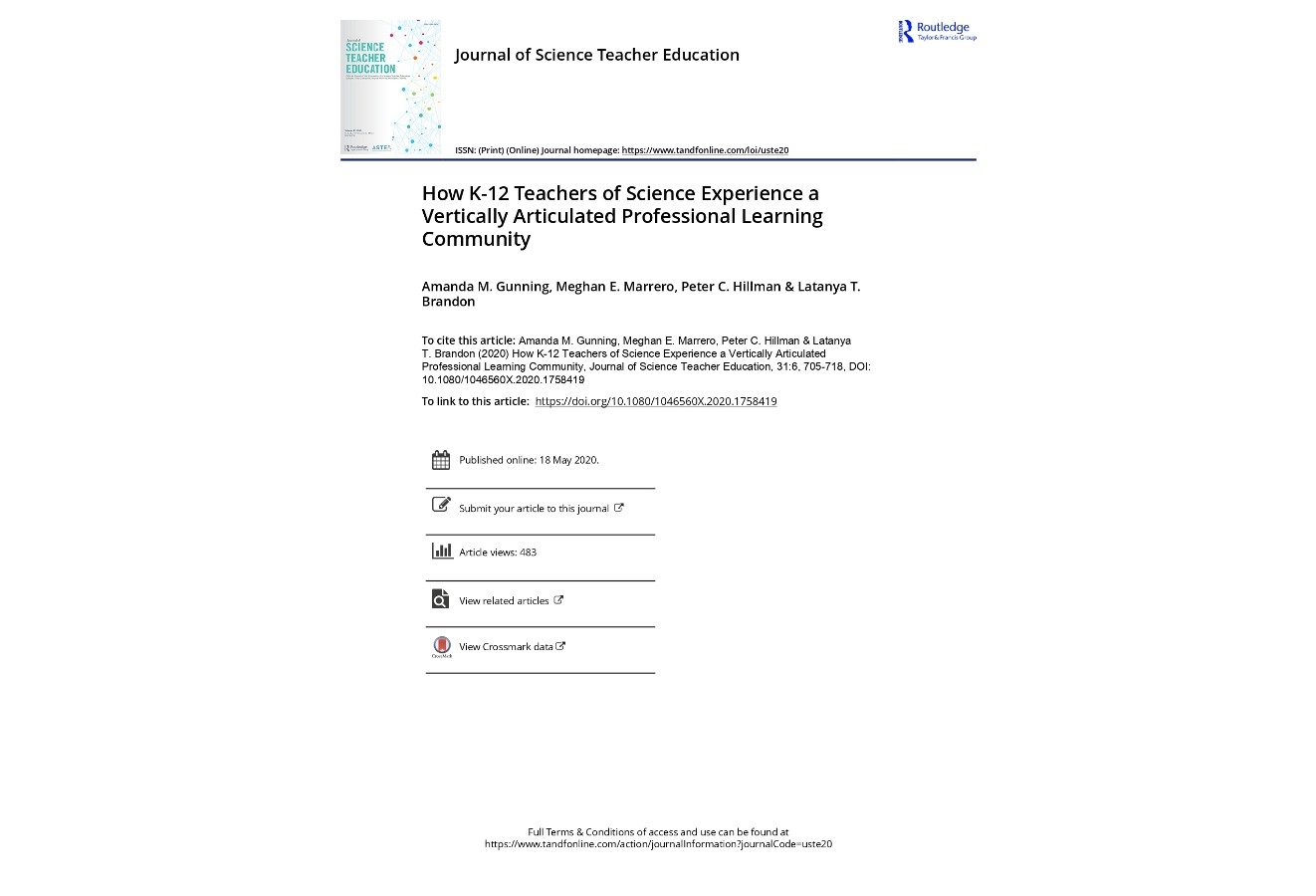
The implementation of Next Generation Science Standards (NGSS) and its derivatives in science classrooms across the nation require a significant shift in the way that science teachers teach and plan. Despite the focus on standard reform, many teachers are still left in the dark with little guidance when it comes to what to teach or how to teach it (Harris, Sithole, & Kibirige, 2017; Kauffman, Moore Johnson, Kardos, Liu, & Peske, 2002; National Academies of Science, Engineering, and Medicine, 2015). School and district administration continue to seek supports and curricula consistent with expectations (NRC, 2012). In particular, teachers need to be familiar with the vertical articulation of the content, practices, and crosscutting concepts laid out in the NGSS. These learning progressions allow educators to not only target students’ learning for the grade they are currently teaching but also provide guidance on the level of understanding for a concept or skill that the student should arrive with from the previous grade and what they will be expected to build toward for the next grade level (Duncan & Rivet, 2013). This understanding supports teachers’ planning of rigorous science instruction for students at each step of their academic pathway. Academic debate has shifted from if standards should be used to guide professional development, to how they should be used most effectively (Loucks- Horsley, Stiles, Mundry, Love, & Hewson, 2010; Luft & Hewson, 2014; National Academies of Science, Engineering, and Medicine, 2015). According to Wilson (2013), there is not one straightforward approach to supporting teachers in implementing NGSS due to the complexity of the education system in the United States. Professional development that supports teachers’instructional shift must attend to local needs. What’s more, different approaches to professional development significantly impact teacher learning, albeit in different ways (Kennedy, 2019). Thinking about content throughout students’ vertical development is an untapped opportunity for teacher professional development to support teacher implementation of NGSS-based instruction in local high-needs schools.
